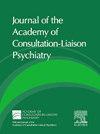对二氯苯毒性:一例报告及现有文献的系统回顾。
IF 2.5
4区 心理学
Q2 PSYCHIATRY
Journal of the Academy of Consultation-Liaison Psychiatry
Pub Date : 2025-09-01
DOI:10.1016/j.jaclp.2025.06.008
引用次数: 0
摘要
背景:对二氯苯(PDCB)是樟脑丸和马桶除臭剂中的一种有效成分。当PCDB被急性或慢性摄入时,可能导致涉及多器官系统的毒性,包括脑、肾、肝和皮肤。病例报告:一名32岁女性因亚急性认知能力下降、弥漫性鱼疹、反射亢进、肠道和膀胱失禁以及上肢僵硬而被送入专科医学和精神科住院病房。最初广泛的血清、脑脊液和尿液检查仅对缺铁性贫血有显著性影响。脑磁共振成像显示脑室周围白质脑病。随后向她的配偶寻求担保,她的配偶透露,在陈述之前,她已经服用了一年多的厕所除臭剂。随后血清和尿液中PDCB浓度升高,患者被诊断为PDCB毒性。她得到了支持性护理,但最终,她出现了严重的认知能力下降,需要胃造口管来提供营养支持,并出院到一家专业护理机构。出院后6个月病情无变化。文献回顾:我们对所有报告的人类多氯联苯中毒病例进行了系统回顾;我们查询了PychINFO, CINHAL, Web of Science和OVID/Medline,确定了18个相关的PDCB毒性记录。我们的综述显示,多氯联苯毒性通常会导致显著但非特异性的神经精神病学、皮肤和神经影像学结果。有缺铁性贫血和药物使用史的年轻女性似乎更容易发生多氯联苯中毒,但需要更多的研究来阐明这些关联。结论:临床医生应保持对中毒摄入的高度怀疑,并对脑病病因不明的侧支病史进行全面收集。还应更加注意作为一种滥用物质的多氯联苯。本文章由计算机程序翻译,如有差异,请以英文原文为准。
Paradichlorobenzene Toxicity: A Case Report and Systematic Review of Existing Literature
Background
Paradichlorobenzene (PDCB) is an active ingredient in mothballs and toilet bowl deodorizers. When PCDB is ingested, acutely or chronically, toxicity involving multiple organ systems, including the brain, kidney, liver, and skin, may result.
Case Report
A 32-year-old woman was admitted to a specialized medical and psychiatric inpatient unit with subacute cognitive decline, a diffuse ichthyotic rash, hyperreflexia, bowel and bladder incontinence, and upper extremity rigidity. Initial extensive serum, cerebral spinal fluid, and urine testing was only notable for iron deficiency anemia. Magnetic resonance imaging of the brain revealed periventricular leukoencephalopathy. Collateral was then sought from her spouse, who disclosed she had been ingesting toilet bowel deodorizers for over a year before presentation. Subsequent serum and urine PDCB concentrations were elevated, and the patient was diagnosed with PDCB toxicity. She was provided supportive care, but ultimately, she developed severe cognitive decline, requiring a gastrostomy tube for nutritional support and was discharged to a skilled nursing facility. Her condition was unchanged 6 months after discharge.
Literature review
We performed a systematic review of all reported cases of PDCB toxicity in humans; we queried PychINFO, Cumulative Index to Nursing and Allied Health Literature, Web of Science, and OVID/Medline, identifying 18 relevant records of PDCB toxicity. Our review revealed that PDCB toxicity often results in significant but nonspecific neuropsychiatric, skin, and neuroimaging findings. Young women with iron deficiency anemia and substance use histories appear to be at particular risk of PDCB toxicity, though more research is needed to clarify these associations.
Conclusions
Clinicians should maintain a high degree of suspicion for toxic ingestion and perform thorough collection of collateral history when the cause of encephalopathy is unknown. Greater attention should also be given to PDCB as a substance of abuse.
求助全文
通过发布文献求助,成功后即可免费获取论文全文。
去求助
来源期刊

Journal of the Academy of Consultation-Liaison Psychiatry
Psychology-Clinical Psychology
CiteScore
5.80
自引率
13.00%
发文量
378
审稿时长
50 days
 求助内容:
求助内容: 应助结果提醒方式:
应助结果提醒方式:


